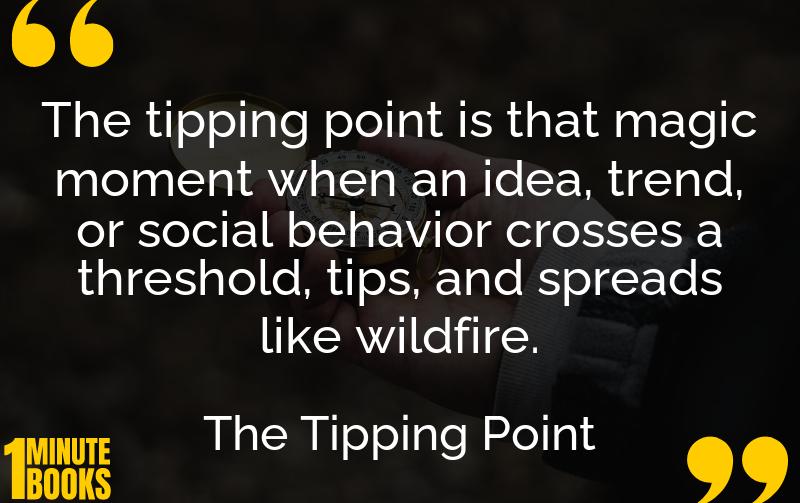
Malcolm Gladwell’s ‘The Tipping Point’ explores why some ideas, trends, or behaviors spread widely and others do not. He introduces key concepts: the law of the few, the stickiness factor, and the power of context, to explain these phenomena.
Main Lessons
- The Law of the Few: Success of any social phenomenon often relies on a small group of influential people – connectors, mavens, and salespeople.
- Connectors: These individuals possess wide-ranging social networks and introduce new ideas to different groups.
- Mavens: Known for their knowledge, mavens love to help others make informed decisions, acting as information specialists.
- Salespeople: Charismatic persuaders who possess the ability to convince others to embrace new ideas.
- Stickiness Factor: The right presentation or a small change can make ideas sticky, staying in the public’s consciousness.
- Experimentation: Small tweaks in how information is packaged can lead to significant impact.
- Power of Context: Environmental conditions heavily influence the spread of ideas and behaviors.
- Broken Window Theory: Addressing small environmental issues can lead to major improvements in social behavior.
- Influence of Social Networks: Ideas spread faster when they enter social networks with specific dynamics.
- Role of Subtle Changes: Often it is not major innovations but minor alterations that lead to wide dissemination.
- Psychological Influence: Human psychology, including how information is processed, plays a critical role in what’s considered sticky.
- Importance of First Impressions: Initial presentations can determine whether an idea gains traction.
- Behavioral Economics: Slight changes in price or presentation can impact consumer choices.
- Cultural Influence: Cultural contexts can be significant factors in determining how information and behaviors spread.








